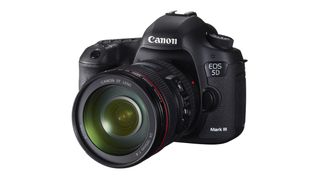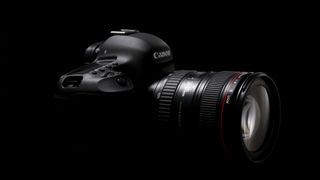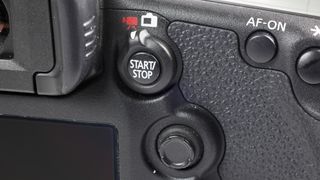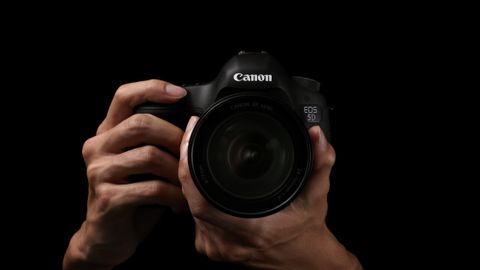Why you can trust TechRadar
Video
- 30, 25 or 24fps
- Max duration 29min 59sec, Max single file size 4GB
- Uncompressed 8bit 4.2.2 via HDMI
The Canon EOS 5D Mark II hit the market in late 2008, and although it wasn't the first DSLR to offer HD video, its ability to record at 1080p footage overshadowed the Nikon D90's 720p, making it the popular choice for many movie makers.
Its launch also marked the beginning of a new era, since for the first time a DSLR was capable of producing video footage that, in the right hands, could rival the visual style and quality of a professional-level movie camera.
Yet despite the Mark II's popularity, early issues with frame rates, audio levels and manual control left many working with its video features feeling frustrated.
Users had to wait a year before the 21.1 million pixel full-frame sensor's full video potential could be realised, when official and unofficial firmware updates unlocked additional features such as zebra stripes, depth of field estimates and an assortment of other handy cinematic tools.

Its replacement, the Canon EOS 5D Mark III, was finally announced in March 2012, offering a new sensor, image enhancements and a host of video improvements.
The headline features don't seem on paper to be that far removed from what has come before, with frame rates remaining at 24, 25 and 30fps at 1080p.
Unfortunately there are no 50 or 60fps options on the Canon EOS 5D Mark III, even though these faster rates have been seen on rival models from both Sony and Panasonic.
However, features such as intra-frame (All-i) formats for higher quality footage, along with SMTPE time code, have migrated down from the Canon EOS 1DX, and recording times have been extended from the relatively short 12 minutes to 29 minutes 59 seconds.
For Canon EOS 5D Mark II users, one of the biggest issues had been the complete lack of audio monitoring through headphones. This is now added to the Canon EOS 5D Mark III, along with visual audio level indicators - these levels appeared on the Mark II after an early firmware update.
One big advantage of the Mark III over the Mark II is the addition of silent controls, again migrated from the 1D X. After activation these enable you to use the rear dial to adjust aperture, ISO and audio values through a touch-sensitive response, but this feature only becomes active while shooting.
A light touch is of course needed, but when you compare this with the noise of moving the dials, as with the Mark II, the benefits of eliminating dial clicks or inevitable shake while filming are instantly apparent.

So the Canon EOS 5D Mark III has made steps rather than leaps forward with video, and because of this, unofficial firmware versions have already appeared, again offering features that many feel should have been incorporated into the official release firmware. Perhaps zebras and peaking might at some point feature in Canon's plans
As ever, specs and features are only part of the picture, and the video enhancements can only be confirmed as improvements after handling the camera.
As with the Mark II or any other DSLR featuring video, the video features, frame rates and audio setup are accessed through the menus, and as expected there's really little difference in how you select the quality, resolution and other video features with the Mark III.
Sure enough there are a few more options for the Mark III, but nothing groundbreaking. The addition of the intra-frame format is a benefit, offering higher quality files, although this is somewhat overshadowed by the knowledge that both the Nikon D800 and Nikon D600 offer clean HDMI output to external recorders. (Update now added in the latest firmware).
Comparing footage shot on both the Canon EOS 5D Mark II and Canon EOS 5D Mark III reveals there is a noticeable difference in the noise and dynamic range, especially as you journey through the sensitivity values.

At the lower end, say ISO160, footage looks very similar from the two models. However, moving up to ISO6400, the Mark III footage is noticeably cleaner, showing less chromatic noise in the shadows and a greater level of detail.
As always the difference in quality is relative, and this difference is only highlighted when footage from the two models is viewed side-by-side.
The Mark II also suffered from issues such as rolling shutter and moiré. Although the moiré was less of an issue on the Mark II when compared with Canon's APS-C cameras, rolling shutter inevitably causes problems with almost any type of panning.
Here Canon seems to have resolved the issue, and in several panning tests the effect is minimal and far less noticeable. One major improvement is the issue of dropping frames while panning, and while this happens constantly with the 5D Mark II's footage, on test the Mark III produced clean frames without drops, even when panning quickly.

For many, one of the biggest downsides of the Canon EOS 5D Mark II was the audio monitoring. And while it was capable of recording audio using an external mic, the inability to actually hear in real time what was being recorded was a major inconvenience.
The Canon EOS 5D Mark III adds a headphone socket that enables this real-time monitoring of audio and really does make a huge difference, especially when presenting live.
However, as with all video-enabled DSLRs, while the audio is good, the preamps are still not fantastic, so for a true clean audio experience an external recorder is still a good idea. On this front the addition of time coding should make audio syncing post-capture that much easier.
The recording procedure has also changed for the Canon EOS 5D Mark III, with a dedicated live view movie to still switch to the right of the viewfinder replacing the old single live view option of the 5D Mark II.
This means that you don't have to swap between still and movie live view modes in the settings, which is a great time saving addition.
The way you start and stop video recording has also changed, with the new switch holding the start/stop record button, as opposed to the Mark II's Set to Start option.
The large control dial on the back is now touch-active to adjust settings while shooting, which takes a little time to get used to, but in practice works well.
While it's a nice touch, you generally set the exposure before shooting, and although you avoid the clunk of a rotating dial and to some extent movement from having to physically move the dials, the electronic aperture control still generates a fair amount of noise.

Is there a moral imperative for businesses to share data?

Why sovereign AI infrastructure is driving worldwide adoption of Generative AI

Real life 6G speed tests revealed by Japanese tech giants — 100Gb/s transmissions could become the norm for mainstream wireless network data transfer within a few years
